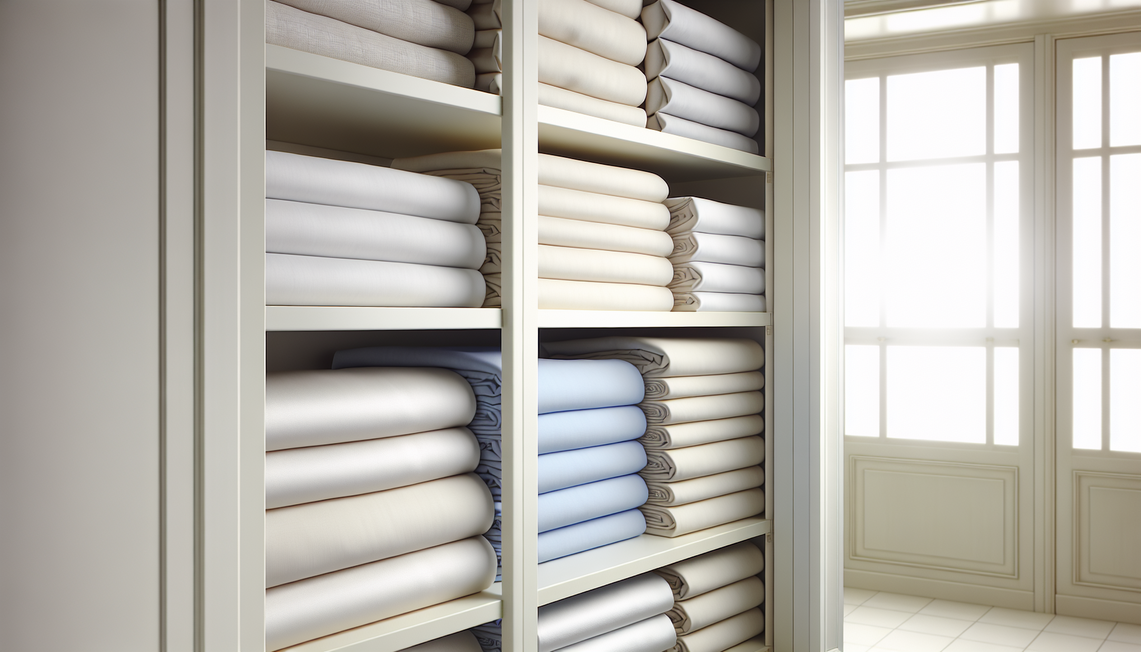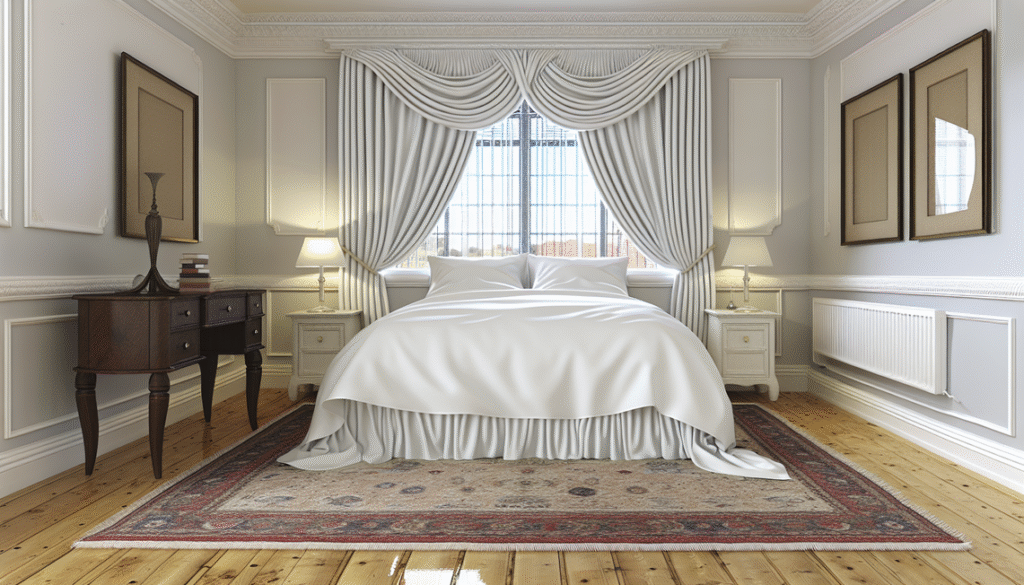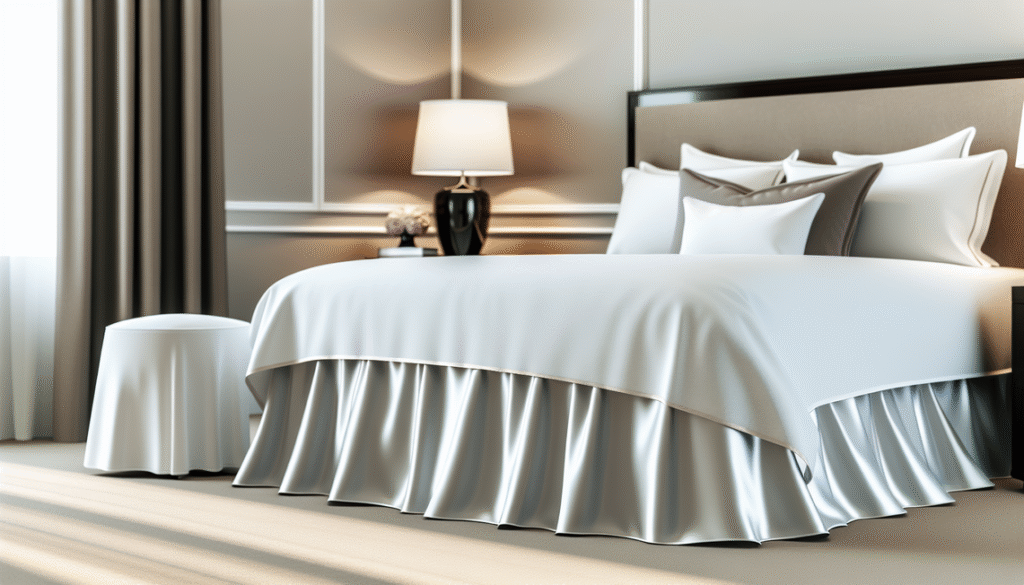Managing bedding can often feel like a never-ending chore, especially when it comes to those notoriously tricky extra deep fitted sheets. A common fixture in UK households with plush, thick mattresses, their generous proportions and significantly deeper pockets present a unique challenge that standard folding methods simply can’t handle. While a regular fitted sheet comfortably accommodates mattresses up to 10–12 inches (25–30cm), extra deep variants are specifically engineered for mattresses exceeding 12 inches (30cm) in depth—often stretching from 30 to a luxurious 40cm (12 to 16 inches).
This additional fabric, coupled with robust elastication and overall bulk, often results in a crumpled mess in the linen cupboard, consuming valuable storage space. For many UK homes, where living spaces and storage areas like wardrobes and drawers are typically more compact, efficient management of bulky items like bedding is not just desirable but essential. By understanding the specific needs of these deep fitted sheets and employing tailored folding techniques, you can not only maintain an impeccably tidy linen cupboard but also extend the lifespan of your sheets by minimising creases and undue strain on their vital elastic components. Dive into our comprehensive guide to master the art of folding and storing these essential bedding items neatly.
Why Folding Extra Deep Fitted Sheets Needs a Different Approach
Extra deep fitted sheets are a staple for UK households with thick mattresses, but their larger size and deeper pockets can make folding and storing them a real challenge. Unlike standard fitted sheets that typically fit mattresses up to 10–12 inches (25–30cm), extra deep fitted sheets are designed for mattresses that measure over 12 inches (30cm) in depth — often ranging between 30 to 40cm (12 to 16 inches). This additional fabric, elastic depth, and bulk mean traditional folding methods often fall short, leading to messy storage and wasted space.
For UK homes, which tend to be smaller on average with limited wardrobe and storage drawer space, managing bulky sheets efficiently is critical. Understanding the nuances of these “deep fitted sheets” and applying adapted folding techniques not only keeps your linen cupboard tidy but also extends fabric longevity by reducing creases and strain on the elastic.
Understanding “Extra Deep” Fitted Sheets: UK Mattress Sizes and Fabric Details
In the UK, bedroom sizes and mattress depths vary widely. Here’s a quick guide to mattress depths and how “extra deep” fitted sheets accommodate these variations:
| Mattress Size | Typical Depth (cm) | Standard Fitted Sheet Depth (cm) | Extra Deep Fitted Sheet Depth (cm) |
|---|---|---|---|
| Super Single | ~25 cm (10″) | 25–30 | 30+ (Extra Deep) |
| Small Double | ~25 cm (10″) | 25–30 | 30+ |
| Double | 25–30 cm (10–12″) | 25–30 | 30+ |
| King | 25–30 cm (10–12″) | 25–30 | 30+ |
| Super King | 25–30 cm (10–12″) | 25–30 | 30+ |
Deep fitted sheets are specifically engineered to accommodate mattresses thicker than the typical 25–30cm depth, often featuring stronger and more robust elastic bands to ensure a snug fit around deeper pockets. This prevents the sheet from slipping off during the night, a common frustration with standard sheets on thick mattresses.
The fabrics typically used for these comfortable deep fitted sheets include high-quality cotton, luxurious cotton blends, or durable microfiber. Each material requires careful handling during folding to prevent fabric strain and preserve the crucial elasticity that ensures a snug fit. Given the varying UK humidity levels, particularly in coastal or damper regions, specific fabric care and dry, well-ventilated storage are vital. This approach helps prevent issues like mildew or dampness, ensuring your deep fitted sheets remain fresh and inviting for longer.
Expert Step-by-Step Guide to Folding Extra Deep Fitted Sheets Neatly
Folding extra deep fitted sheets requires a modified approach to manage their extra fabric bulk and elastic corners effectively. Here’s a practical method synthesised from top expert techniques, designed to help you achieve a perfectly neat, compact bundle:
Step 1: Prepare and Lay Flat
Begin by holding your extra deep fitted sheet from the inside of the two top corners on one short side. With the right side of the fabric facing towards you, meticulously tuck one corner completely into the other, ensuring all elastic edges are perfectly aligned. This creates the foundational pocket for subsequent folds, consolidating some of the extra fabric.
Step 2: Repeat on the Other Side
Now, repeat the exact corner-tucking process on the opposite end of the sheet. Again, ensure all elastic edges are folded neatly inside, effectively creating a more manageable rectangular shape. At this point, all four elasticated corners should be nested within each other, forming a single, reinforced edge.
Step 3: Lay the Sheet on a Flat Surface
Carefully lay the folded sheet down onto a large, flat surface—a bed, table, or even a clean floor works well. Take your time to smooth out any bulges and straighten all edges. This crucial step helps to eliminate excess air and reduce the overall bulk, preparing the deep fitted sheet for a tighter, more uniform fold.
Step 4: Fold Lengthwise
Once the sheet is flattened, fold one long edge towards the centre of the sheet. Then, take the other long edge and fold it over the first, creating a long, narrow rectangle. The goal here is to completely hide all the elastic edges within these layers, protecting them and contributing to a cleaner, neater appearance.
Step 5: Fold Widthwise
Finally, take your long, narrow rectangle and fold it widthwise. You can choose to fold it in thirds or quarters, depending on the specific dimensions of your available storage space. Aim for a compact, neat square or rectangle that will fit perfectly into your linen cupboard or drawer.
Step 6: Final Smoothing
As a last touch, gently smooth each fold one more time. This helps to eliminate any lingering creases and ensures your deep fitted sheets remain as wrinkle-free as possible until their next use. Visualising these steps can be incredibly helpful; watching UK-centric demos or well-regarded tutorials adapted for extra deep sheets is highly recommended to perfect your technique.
Key Differences: Folding Extra Deep vs Standard Fitted Sheets
When folding extra deep fitted sheets compared to their standard counterparts, several key differences demand particular attention:
- Fabric Bulk: The most significant difference is the sheer amount of extra fabric required for deeper pockets. These additional layers demand more precise folding and meticulous smoothing to prevent thick, unmanageable lumps. Patience and a methodical approach are your best tools here.
- Elastic Edges: Deep fitted sheets often feature stronger, thicker elastic to maintain their secure fit on large mattresses. It’s crucial to keep these robust elastic edges carefully tucked inside the folded layers. This not only preserves the elastic’s longevity but also prevents it from snagging on other items in your linen storage.
- More Layers: The strategic process of folding lengthwise and then widthwise becomes even more critical with extra deep sheets. This multi-step approach helps to consolidate the bulk into manageable-size bundles that are compatible with typical UK storage furniture dimensions.
- Wrinkle Prevention: Due to the increased fabric, wrinkles can be more pronounced and harder to smooth out in thick materials. Folding with extra care and attention significantly helps prevent deep creases, saving you time and effort when you next use the sheet.
Common mistakes often include rushing the corner folding process, which leads to misaligned edges and added bulk, or leaving the elastic exposed, which inevitably results in disorganised stacks, difficulty in locating matching sets, and can even compromise the elastic over time.
Smart Storage Solutions Tailored for UK Homes and Bedding Sizes
Considering typical UK housing constraints, such as smaller bedrooms and often limited storage space, efficient storage ideas are paramount for your extra deep fitted sheets:
- Wardrobe Shelves: Utilise horizontal shelving inside wardrobes, stacking your neatly folded sheets in tidy piles. To prevent shelves from sagging under the weight of multiple sets, consider using sturdy storage bins or supportive shelf dividers.
- Drawers: Dedicate specific drawers exclusively for bedding sets. Fold your extra deep sheets to the exact width of the drawer for maximum space-saving efficiency and a visually appealing, organised look.
- Under-Bed Storage: Many UK homes ingeniously maximise under-bed space. Invest in shallow, ventilated storage boxes specifically designed for linens. These keep sheets dry, dust-free, and easily accessible, making use of otherwise wasted space.
- Linen Press or Cupboards: If your home boasts a traditional linen press or dedicated airing cupboard, these are ideal. They offer excellent airflow, helping to maintain fabric quality and freshness, especially for your bulkier deep fitted sheets.
- Vacuum Storage Bags: For seasonal storage, particularly useful in smaller flats or apartments, vacuum bags dramatically reduce the bulk of your extra deep sheets. However, avoid long-term compression to preserve the integrity and elasticity of the fabric.
Fabric Care Tips: Given the UK’s often humid climate, storing sheets in dry, well-ventilated areas is essential. Incorporating moisture-absorbing sachets or silica gel packets within your storage solutions can provide an extra layer of protection, safeguarding fibres from damp damage and ensuring your bedding remains fresh.
Pro Tips for Keeping Your Deep Fitted Sheets Tidy, Accessible, and Ready to Use
Mastering the art of folding is just the first step. Here are some professional tips to ensure your deep fitted sheets remain tidy, accessible, and in pristine condition for use in your UK home:
- Consistent Folding Practice: Make it a habit to fold all your sheets the same way. This consistency creates uniform stacks, making them much easier to handle, store, and replenish in your linen cupboard.
- Label Your Sets: Especially if you have a variety of sheet sizes (e.g., King, Super King) or rotate bedding seasonally, use fabric tags or small labels. This simple trick allows for quick identification of sheet sizes and fabric types, streamlining your bed-changing routine.
- Rotation Routine: Implement a ‘first in, first out’ system. Use older sets first and store freshly laundered sets on top. This ensures all your linen supply gets regular use, stays fresh, and remains in good condition, preventing any set from being neglected.
- Quick Refresh Hacks: To reduce wrinkles and static that can accumulate on stored sheets, lightly spritz them with water or use a fabric refresh spray just before folding or when taking them out. This prepares them for a smooth, inviting feel.
- Mindful Storage Placement: Keep your most commonly used deep fitted sheets in easily accessible spots, such as eye-level shelves in your linen cupboard. Less frequently used or seasonal sets can be stored in less accessible areas, like higher shelves or under-bed storage, optimising daily convenience.
The Benefits of Proper Folding and Storage: Save Space and Time in Your UK Home
Efficiently folding and storing your extra deep fitted sheets brings a multitude of notable advantages to UK households, transforming a mundane chore into a satisfying aspect of home management:
- Space Optimisation: Proper, compact folding techniques can genuinely save up to 30% more space in your linen storage. This is a vital factor given the typical size constraints of UK homes, where every inch of storage counts.
- Wrinkle Reduction: Neat, precise folds significantly limit the formation of stubborn creases. This translates into less time spent ironing or steaming your deep fitted sheets before making the bed, giving you back precious minutes.
- Extended Sheet Lifespan: By minimising unnecessary tension and strain on both the fabric and, crucially, the elastic components, you actively preserve the quality and integrity of your sheets. This prevents premature wear and tear, reduces creasing, and helps maintain the integrity and fit of the sheet over many years of use, representing a smart investment.
- Aesthetics and Organisation: A tidy, well-organised linen cupboard, where every sheet is neatly stacked and easily identifiable, contributes to a more peaceful and visually pleasant bedroom environment. It makes finding what you need a joy, not a hassle.
According to the UK National Office of Statistics, cramped housing and limited storage remain chief complaints among residents, making efficient linen storage a priority in maintaining comfortable living spaces. Investing a few extra minutes in folding your deep fitted sheets properly can significantly improve your home organisation routine, bringing a sense of calm and order to your household.
For a range of high-quality extra deep fitted sheets designed to fit UK mattresses perfectly and crafted for easy care and durability, explore the collection at Rugstars. Upgrade your bedding storage today with expert-approved sheets that simplify the folding and storing process, tailored specifically for UK homes and lifestyles.
Frequently Asked Questions About Deep Fitted Sheets
Q1: Why are extra deep fitted sheets harder to fold than standard ones?
Extra deep fitted sheets are designed for thicker mattresses (over 12 inches or 30cm), meaning they have significantly more fabric and deeper elasticated pockets. This additional bulk and elasticity require a modified folding technique to manage effectively, preventing them from becoming a messy, bulky pile in your linen cupboard.
Q2: What does “extra deep” typically mean for a fitted sheet in the UK?
In the UK, an “extra deep” fitted sheet is generally designed for mattresses with a depth exceeding 12 inches (30cm), often accommodating mattresses up to 16 inches (40cm) deep. Standard fitted sheets usually fit mattresses up to 10-12 inches (25-30cm).
Q3: How can I prevent wrinkles in my extra deep fitted sheets while they are stored?
To minimise wrinkles, ensure you smooth out each fold meticulously during the folding process. Store your sheets in neat, compact bundles rather than cramming them. For a quick refresh before use, lightly spritz with water or a fabric refresh spray. Consistent, careful folding is key to a wrinkle-free linen cupboard.
Q4: What are the best storage solutions for deep fitted sheets in smaller UK homes?
Given typical UK housing constraints, effective storage solutions include stacking neatly on wardrobe shelves (using dividers for support), dedicating specific drawers, utilising under-bed storage boxes, or if space permits, a linen press. For seasonal storage, vacuum bags can reduce bulk, but avoid long-term compression to protect elasticity. Always ensure storage areas are dry and well-ventilated.
Q5: Does proper folding really extend the lifespan of my deep fitted sheets?
Absolutely. Proper folding minimises tension and strain on the fabric and, crucially, the elastic edges of your deep fitted sheets. This prevents premature wear and tear, reduces creasing, and helps maintain the integrity and fit of the sheet over many years of use, ultimately extending its lifespan and saving you money.



